|
Can RVers stay at truck stops? We wondered this, as backing into or pulling through a parking spot designed for a semi-truck can feel cramped. We need at least 5 feet on the passenger side of our fifth wheel in order to open our stairs to get inside the rig to sleep. We’ve managed to do that at rest areas, but maybe their spots are wider. We tend to avoid staying at busy truck stops. We don’t mind the low-pitched bub-bub-bub of the diesel engines, because the noise tends to be constant. But we don’t want to take a spot away from a trucker who might need it. We have great respect for truck drivers and what they put up with to keep our supply chain operational. We’ve overnighted at a couple of spacious truck stops, however. At one, we were able to park next to a telephone pole that prevented a truck from getting too close to us — and gave us plenty of space to easily get into and out of our rig. A roomy dirt lot across the street from another truck stop let us spread out and not feel cramped. In both of these instances, we kept our truck connected to our trailer and boondocked. We felt safe, slept peacefully, and experienced nothing out of the ordinary. We were able to fuel our truck, open our dining room slideout to get to our living room, eat a meal, relax in front of the TV, start the next day with hot coffee, and get on the road to our destination in a timely fashion. A New Overnight Truck Stop Option Wanting to cater to more RVers, Love’s started installing RV sites at its easily accessible truck stops in 2022. They include Wi-Fi, electric and water hookups, and access to a dump station. Today, Love’s has 61 RV stops across the country. All spots are bookable and payable from a mobile device or an on-site kiosk. We had heard these could be pretty costly, so we didn’t think we’d ever take advantage of this option. But finding ourselves in need of a convenient overnight stop with electricity to power our air conditioners in the humid South, we decided to give a Love’s RV Stop a try while passing through Alabama. Many Love’s RV Stops are fenced off, located away from the trucker parking, and somewhat private. The one we tried out included eight RV sites near the auto/RV fuel pumps. Getting into the spots in a setup like this can be tricky if the gas station is busy. Thankfully, we were able to back into our site just fine. It wasn’t level, but it was concrete. We fished out one of the boards we carry in the back of our truck. Bob drove forward, and I placed the board into position behind the tires on the low side of the trailer. He backed the rig onto the board and pretty well evened it out side to side. Because this was an overnight stop, we didn’t want to disconnect the truck from the trailer, even though Tagalong was about 3 inches high in the front. This being a designated camping spot, we felt freer to leave our dining room slideout open, which gave us living space to enjoy while we recuperated from our drive for the day. Overall Experience The building on the premises included restrooms, showers, a store, and a couple of restaurants, which made for quick and easy meals after a busy day of travel. We were able to grab coffee in the morning before hitting the road, preventing us from dirtying dishes and adding water to our gray tank. On our way to moochdock at the home of some friends, we wanted our tanks empty. The constant movement of vehicles and people in and out of this location felt a little sketchy for our first foray into Love’s RV Stops. We kept our door locked whether we were inside or outside of our trailer. It helped that we parked directly under a light. Despite these seeming drawbacks, the convenience of the stop made it worthwhile for the $38 we paid. En route to our destination the following day, we stopped at another Love’s for fuel. It had a nicer RV setup, protected by a wooden fence and separate from truck parking and fuel pumps — for an additional $10. We had considered staying at it the night before, but that would have meant driving another hour and a half or so. We were grateful to save that time. We would definitely consider trying another Love’s RV Stop when we need a convenient overnight stay on a long drive. It does offer a lot of pluses.
You might also like Our Favorite Phone Apps for RVing.
0 Comments
When you think of camping in an RV, you may picture luxury: electric-powered lights and television, running water, and a flushable toilet. At campgrounds that offer full hookups, those things are realities. Boondocking, or dry camping, however, means sacrificing those luxuries. Or does it? Without shore power electricity, you can camp as if tent camping, reading and participating in outdoor activities rather than watching TV or using a laptop, and relying on solar-powered lamps after the sun goes down. But those aren’t your only options. If you’ve ever wondered what it’s like to live off-grid in an RV, we’re happy to share about our experiences doing so. Powering Up and Topping Off Thanks to the 10 solar panels on our fifth wheel roof (six 160-watt and four 100-watt), we typically get enough energy to keep our three 170-amp-hour batteries charged to power everything we want to operate. That includes my work laptop, dual monitors, office light, Bob’s computer, our TV, digital picture frame, and Google Home — and even charge our phones. We rely on propane to run our refrigerator, water heater, space heater, stove, and oven. Our rig has designated holding spaces for three 7-gallon/30-pound propane tanks, which provides plenty of fuel for a week or two off-grid. We limit microwave use, instead opting to heat water, coffee, soup, and leftovers on the stove. For water to make coffee and meals, clean dishes, brush our teeth, flush the toilet, shower, and drink, we have to find a potable source to fill our 75-gallon freshwater tank. We prefer to do this near our camping destination at a gas station, campground, or dump station rather than hauling the liquid long distances, which can affect fuel efficiency and put unnecessary strain on Gulliver and Tagalong. We tend to stock up on groceries, prescriptions, and other supplies before going boondocking. That way, we can stay longer, which saves on fuel. Finding Warmth on Cold Mornings On cold workday mornings, I get out of bed and, clad in a fluffy robe and slippers, descend our three steps to turn on our portable propane heater in the living room. The portable heater is more energy-efficient than our onboard propane heater, which uses electricity to start the motor. After that, I open my office door to try to get some warmth in there and then roll up window shades. Most of our windows include two shades: privacy and blackout. We pull down both after the sun sets to help keep cold air out. Opening the shades in the mornings lets sunshine in for natural heat. Then I check our VictronConnect phone app to get a read on our batteries’ state of charge. If it registers 75% to 80% and the weather forecast calls for a sunny day, I know I can run my little electric room heater in my office without too much dent on our battery life. If, however, the reading is closer to 50%, I need to conserve as much energy as possible. That means starting my workday in the warmth of bed or in the living room near the heater using my laptop disconnected from a power source and from my wall-mounted dual monitors. When my tummy starts rumbling, I heat water on the stove to brew coffee in our 50-ounce French press and make a bowl of oatmeal. “What about Bob?” you may be wondering. He stays in bed reading the news and then has a light breakfast on his own. On rare occasions of multiple cloudy days, Bob starts one of our two propane-powered generators to charge our batteries up to 100%. Dealing with Waste With no garbage pickup off-grid, we have to remember to take our trash with us to deposit in a public wastecan anytime we venture into town. We also have to be mindful of the liquid that goes down our sink and shower drains. Our fifth wheel has a capacity of 85 gallons of this gray water, which tends to add up fast — even with turning off the faucet between lathering and rinsing when taking a shower. Wastewater also comes in the form of black water, or toilet water. Our rig has a 50-gallon capacity for this. Our gray and black water tanks usually last for a couple of weeks before we need to empty them. If we plan to boondock longer than that and don’t want to hook up the truck and trailer to haul to a dump station, we have to find a way to dispose of their contents. Some RVers carry a macerator and portable wastewater tank for this purpose. We don’t have either of those, so we try to take advantage of public restrooms when away from our RV and be vigilant and sparing when using water from our faucets. Enjoying Nature By camping off-grid, we’re able to get our rig into scenic areas we otherwise wouldn’t, such as in the shadow of a towering mountain, atop a butte overlooking a city, or near a rushing river or expansive lake. We like to take daily walks in nature to get exercise and admire wildflowers, desert flora, and varying terrain — and creatures big and small in their natural habitat when we happen upon them. Getting out of our rig also allows us to meet other RVers and exchange stories.
Being in nature isn’t always all it’s cracked up to be, however. It often comes with windy conditions, the price we pay for the beautiful surroundings. We’ve learned to accept that as part of the experience. Despite that aspect, we’ll continue to take advantage of the boondocking opportunities that come our way. You might also like 7 Best Boondocking Hacks. When we started our full-time RV lifestyle in 2020, we began with a blank U.S. map. We decided that to add any state sticker to the map, we had to sleep in our rig in that state. The map includes the state of Hawaii, but how do RVers honestly put Hawaii on their map? We’ve heard about some creative ways to add the 50th state to an RV map. Some RVers have taken a picture of their rig with them when visiting Hawaii and hung it above their heads while sleeping to say they slept there in their rig. Small RV rentals, such as camper vans available on the islands, offer another possibility. Some RVers have left their traveling homes in the contiguous states and taken the camper van rental route to get Hawaii on their RV maps. We decided to forgo putting Hawaii on our map, but that didn’t prevent us from visiting the beautiful state. We did so by embarking on a cruise from Long Beach, California, with stops in Maui, Honolulu, Kauai, Kona, and Hilo. We slept on the cruise ship every night, so we technically didn’t sleep in the state anyway, even if we had taken a picture of our rig with us. Island Allure Millions of tourists are drawn to Hawaii’s volcanic islands every year for their tropical climate, bountiful flora, colorful sand beaches, captivating volcanoes, abundant sea life, expansive pineapple plantations, and plentiful hiking and surfing opportunities. Having taken the same cruise on the same ship eight years earlier, we were drawn by the 15-night sailing, our love of cruising, and easy accessibility to Los Angeles from Arizona. After a very busy year, a cruise offered a much-needed getaway for us to disconnect from technology, unwind, and refresh. After relishing four relaxing sea days, being rocked to sleep every night by the ocean waves, we toured volcanoes, paid our respects to the soldiers entombed in Pearl Harbor, basked in the Hawaiian sun, dined on fresh seafood, and admired uncommon-to-us sea life. One of the things we enjoy about our full-time RV lifestyle is the myriad opportunities we get to visit friends and family across the country. We had that same opportunity in Kauai, where Bob’s brother Rick and his wife, Carolyn, were vacationing. We spent a wonderfully easygoing day with them — and even saw sea turtles and whales. Making Memories The highlight of our Hawaii visit was renting a Mustang convertible in Maui and driving to the top of Haleakala Crater, a national park with a summit that rises 10,023 feet above sea level. As the car ascended the switchback road, we found ourselves high above the clouds without being in an airplane. We even looked down on a rainbow, a truly unique experience (but unfortunately didn’t get any pictures of it). When we reached the visitor center shortly after the park entrance, gusting winds made us shiver — and close the car top. A few miles later, at the summit parking lot, the outdoor temperature registered 48 degrees. Pushing the car doors open against what felt like 35 mph winds — and dressed in only shorts and short sleeves — we braved the cold, passing ice on the ground as we approached an overlook building. Closed, it offered no respite from the cold blasts. We quickly snapped some pictures overlooking the crater and ran back to the car to return to the visitor center. After descending the volcano and reaching normal altitude, we opened the top of the car to enjoy the Hawaiian sun. With some of our favorite Petra tunes blaring, we drove toward a black beach off the beaten path. In Hawaii, all of the beaches are public. Despite that, we had this one virtually all to ourselves.
Of course, we had to go into the water. We had originally planned to snorkel here, having read about the coral reef not too far from shore. But the wind had made the waves choppy and the water murky. We swam for a while and then sat in our beach chairs to dry as the sun neared the horizon, thankful for an amazing day, time together, and God’s beautiful creation around us. You might also like Where We Park Our Rig for Flight/Cruise Travel. Living in an RV full time looks spectacular on YouTube, where RVers showcase magnificent travels, amazing destinations, and exciting adventures. But is RV life really all that glamorous? After four years on the road, we can tell you it definitely is not. Sure, parts of the lifestyle live up to that reputation, but many others leave much to be desired. Here are some of the negative aspects of full-time RV living: Travel-Day Squabbles Typically, we enjoy a week or two in a single location, exploring what the area has to offer and keeping busy while there. When we get into the truck on travel days, we have dedicated time with each other, interrupted only by fuel and rest stops or rare sightings along the way. It seems these occasions often become times to discuss issues between us, since neither of us can walk away. This can make for unpleasant travel that may carry into arriving and setting up at our destination. Sometimes, we forget we’re on the same team and in a partnership. That’s why you can find T-shirts and mugs that say, “I’m sorry for what I said while backing up the trailer.” Long Driving Days Reaching a destination by a certain date — for a wedding or a cruise, for example — may require multiple days of driving. This can be exhausting. One day, we drove 11 hours trying to get somewhere due to a family member’s medical emergency. Similarly, we spent eight days driving the Alaska Highway each way. Even though we traveled only three to four hours on most of those days, we kept all but our dining room slideout closed at any overnight stop. That kept us from taking up too much space at, say, a rest area while still allowing passage to our kitchen and refrigerator. Not being able to “be home” day after day wore on us. To help break up the trip, we spent two nights at the Liard River Hot Springs Campground in British Columbia both ways. This enabled us to open all four of our slideouts and truly feel at home. On the way back to the Lower 48, we also stopped at a museum in the Yukon to make the journey more enjoyable. Breakage Towing all of our belongings across the country equates to an earthquake in our “house” every time we relocate. Some roads are definitely better than others. The constant vibration can knock things loose. Big bumps or potholes can bounce hanging clothes off their closet rack. Pipes leak, sealants let go, and screws come loose. It seems that almost every time we move, we find something else that needs our attention. It may be a tire, a window, the truck bed cover, or any number of other things. That’s why we make a point to give the vehicle a thorough walkaround before travel and when we stop at a rest area or fuel station. We’ve learned to roll with the punches and take these issues in stride. They’re just part of RV life, but they’re not necessarily fun.
Logistics Unless you have a small rig such as a camper van or a truck camper, logistics tend to be a big part of full-time RV living. We have to do a lot of research before venturing anywhere to make sure our big rig can fit. This can take a lot of time. Checking our desired destinations is more crucial in the East, where clearance can be more challenging, than it is in the West. We had absolutely no clearance issues in Alaska. There, 15 feet, 10 inches is considered low clearance, compared to anything below 13 feet, 6 inches in the rest of the country. Uncertainty Because we move so often, it’s hard to keep track of where we are and where we’ve been. We both experienced that same situation when we toured with the Continental Singers and Orchestra, which is how we met. For three months, we had a concert in a different city every night. Fast-forward 36 years, and we’re having deja vu moments. Many mornings, we wake up unsure of our location. What state are we in? Where were we yesterday? Where were we when that happened? Despite these challenges, we enjoy RV life and the freedom it gives us. We also relish visiting family and friends across the country much more often than we’d see them otherwise. Life is good. RV life is great. You might also like More Answers to Your RV Lifestyle Questions. When considering and researching driving to Alaska, we didn’t find much about taking a fifth wheel RV or a big rig on the Alaska Highway. Plenty of sources referenced class C motorhomes, camper vans, and truck campers, but could we take a fifth wheel? The answer is yes, you can drive a fifth wheel on the Alaska Highway, and that’s exactly what we did after many months of preparation. Our truck and rig needed a good wash after the trek (but not as badly as it needed it after our trip on the Dalton Highway). Road Conditions We found the first half of the road to be fantastic, in much better shape than many of the highways we’ve traveled in the Lower 48. The second half, however, left a bit to be desired. We had heard that the road worsened near Destruction Bay in the Yukon Territory. Indeed it did. The highway became littered with large patches of bumpiness. Being early in the season (toward the end of May), we also encountered numerous construction zones, most of which consisted of gravel. In a number of places, we had to wait for a pilot car to lead us through the areas under repair. Once we crossed into Alaska, the road became even worse, with lots of waviness from frost heaves, wide-open potholes, and more construction. The road continued to be challenging until about 40 miles outside of Tok. 8 Tips for Success Adverse road conditions can be harder on fifth wheels and big rigs than they are on camper vans, truck campers, and class C motorhomes. Additionally, smaller vehicles allow for more spontaneity and easier parking. With a 42-foot fifth wheel in tow, we have to be more calculated and plan our stops. Fortunately, most of the gas stations along the Alaska Highway are uncovered, unlike in the contiguous U.S., so we had no trouble pulling in to get fuel. Here are our top tips for success on the Alaska Highway. 1. Set your odometer to 0 in Dawson Creek. This will enable you to follow along with The Milepost book and/or the Alaska Highway book you can pick up in Dawson Creek, British Columbia, at the visitor information center that details the many turnouts along the way where you can stop for lunch or camp overnight. The visitor center also offers a list of gas stations along the Alaska Highway that are noted by mileposts. 2. Know your metric measurements. You likely know the height and width of your rig in feet and inches. In Canada, you need to know those measurements in meters, as that’s how overpasses and bridges are marked. Our rig is 13 feet, 3 inches tall, which converts to 4 meters and 4 centimeters. 3. Be prepared for fueling differences. Fuel prices look inexpensive in Canada, but that’s because they’re per liter rather than per gallon. One liter is equal to 0.26 gallon, so you can roughly determine the price per gallon by multiplying the cost times four. Keep in mind the price is Canadian, which, at the time of this writing, is $1.32 (CAD) to $1 (USD). If you’re used to topping your diesel exhaust fluid (DEF) at the pump in the U.S., be aware this option is a rarity in Canada. We carried a container of DEF with us to ensure we didn’t run out. 4. Watch your speed. It’s best not to be in a hurry on this remote highway. You’ll get better gas mileage going at a slower pace, and it will be easier to stop if you come across something of interest — or happen upon wildlife. Enjoy the journey and make the most of it. The posted speed limits are in kilometers per hour, not miles per hour. It didn’t take us long to learn that 50 kph is 30 mph, 70 kph is 45 mph, 90 kph is 55 mph, and 100 kph is 60 mph. 5. Regularly scan the horizon for wildlife. Spotting wildlife is one of the highlights of driving the Alaska Highway. Keeping your eyes peeled gives you more opportunities to see black bears, bison, moose, porcupines, bighorn sheep, deer, and more. We quickly realized that black blobs from a distance tended to be bears (although some black blobs were culvert openings) and brown blobs were bison. 6. Don’t be afraid to use the other lane. Because the highway is remote, you can use the entire road to avoid taking your rig over bumps unnecessarily. Just be sure you check both behind and in front of you before moving into the oncoming lane. 7. Download playlists and/or podcasts. Knowing that our SiriusXM radio is satellite-based, we expected it to work on the Alaska Highway and even into the 49th state. Because Canada and Alaska are much farther north than the SiriusXM satellites, our radio wasn’t able to see them and left us in silence. We had heard that might happen, so we went prepared and downloaded some Mike Rowe podcasts ahead of time. 8. Keep snacks handy. The Alaska Highway is not like most highways in the contiguous United States, with gas stations and restaurants every few miles. It’s quite remote, leading through very small towns and villages that may or may not have food available. Be prepared: Have snacks on hand and easy-to-make meals at the ready. They’ll come in handy when your tummy’s rumbling and no restaurant is in sight. It’s also wise to have some Canadian cash on hand in case you stop at a small establishment that doesn’t take credit or that’s experiencing internet issues. The Alaska Highway is a great adventure for vehicles of all shapes and sizes, offering beautiful scenery and plentiful opportunities to meet amazing people. You might also like Crossing the Border into Canada in an RV. After an eventful time in Virginia Beach, Virginia, we wanted to venture to Ocean City, Maryland, to visit some friends we had made on our 2022 transatlantic cruise. Crossing the Chesapeake Bay Bridge-Tunnel offered the quickest, most direct route, saving 95 miles and about three hours of travel time through the congested Washington, D.C., area. Considered one of the seven engineering wonders of the modern world, the Chesapeake Bay Bridge-Tunnel is a 17.6-mile crossing of the Chesapeake Bay. Since opening in 1964, it’s taken more than 140 million vehicles from Virginia Beach to the state’s Delmarva Peninsula, or vice versa, traversing both over and under the water. The bridge-tunnel includes not one, but two tunnels, each about a mile long. Crossing the bridge-tunnel takes only about a half hour but can be nerve-racking in an RV if you’re unprepared for it. To Cross or Not to Cross? As the time approached for us to travel to Ocean City, Bob put his excellent research skills to use to explore our options to get there. The bridge-tunnel’s direct route and time savings made us give it serious consideration. Had other RVs made it through? Did semi-trucks use the route? How tight were the travel lanes? We had read that the max vehicle height for the tunnels is 13 feet, 6 inches, the size of semis. Our rig is 3 inches shorter, so we took some comfort in that, knowing we had a little more clearance than trucks did. Because of the potential stress of driving an RV across the bridge-tunnel, Bob had decided we’d forgo it and take the long, inland route instead. But advice from a friend made him reconsider. Jim had traveled the bridge-tunnel numerous times and had seen semis and RVs make it through with no issues. The only potential risk was weather. If conditions are too windy, the Chesapeake Bay Bridge and Tunnel Commission closes the bridge-tunnel until conditions improve. We decided to keep our trip short and take the direct route across the bridge-tunnel. Travel Day The weather looked good on our day of departure. We waited to leave our campsite at First Landing State Park until about 9 a.m. to let traffic die down. Navigating to the bridge-tunnel proved easy enough. We made it to the toll plaza with no problems. Because we have E-ZPass, a transponder in Gulliver that electronically pays tolls we encounter, we didn’t have to exchange any funds. The toll worker asked if our propane was off. We assured her it was, and we were on our way, starting across the bridge. A semi-truck passed us, relaxing any remaining frayed nerves. Prior to this experience, we had thought the dimensions listed before tunnels and overpasses — 13’ 6” max height, in this case — were the measured distance from road to overpass/tunnel bottom. We learned those signs actually mean the listed dimensions are the maximum height for a vehicle to safely pass without hitting the bridge/tunnel. As we approached the first of the two tunnels, Thimble Shoal Channel Tunnel, and two-way traffic, Bob concentrated on keeping Gulliver and Tagalong in the middle of our lane. Clearance under the tunnel was fine. We had no problems, although we still got excited when we could see the light at the end of the tunnel. We emerged onto another bridge that led us to the second tunnel, the Chesapeake Channel Tunnel. As we approached that one, a semi-truck came out toward us, clearly demonstrating plenty of clearance. After that tunnel, we crossed another bridge before finally returning to land. Thankful for an uneventful experience, we pulled into the Eastern Shore of Virginia Welcome Center. There, we turned our propane back on to keep the food in our fridge and freezer cold as we journeyed to our destination in Ocean City.
You might also enjoy Starlink for RVs: An Upgraded Internet Experience. When your home is on wheels — and it’s everything you own in the world — you can’t leave it just anywhere to travel via airplane, train, or ship like you can if you live in a sticks-and-bricks house. Instead, you have to put a lot of thought into planning to identify where you’ll be when you want to start your travel, what airport you’ll be flying out of, and things like that.
Living the lifestyle we do, we don’t like to plan very far in advance. We’ve learned that plans change and things break. It’s nice to have flexibility to adjust accordingly. But, when it comes to long-distance travel outside our rig, we can’t afford not to make far-out plans. It’s a necessity for peace of mind that our home and truck will be OK while we’re away. So, where do we park for these getaways? It depends. RV/Mobile Home Parks When we’re stationary during the winter months, we stay in a gated, 55-plus mobile home/RV park. We know our neighbors and the maintenance man, so we feel quite comfortable leaving our rig and truck there. The fact that the community is gated adds to our peace of mind. We left both Gulliver and Tagalong there while we ventured to Las Vegas and again when we went on a cruise out of Long Beach, California. Moochdocking When we’re not stationary, we reach out to friends or family in the area from which we want to depart. If they have room for our rig and are willing to have it sit on their property while we’re gone, it’s a win. Bob’s brother Bill let us park on his property in Massachusetts in 2020 while we went on tour with the B-25 as part of the Commemorative Air Force. Our good friend Darryl drove us to the airport, so we left Gulliver at Bill’s too. In 2021, we left Gulliver and Tagalong at a fellow CAF member’s home in Iowa. Like Darryl, Gene drove us to the airport. Our friends Greg and Sharon, also from the CAF, let us leave our rig in the driveway of their central Florida home while we went on a cruise out of Tampa. Because their place is a couple of hours’ drive from Tampa, we drove Gulliver and left him in long-term parking there, researching the lot first for peace of mind. Pay Storage Other options we’ve looked into but haven’t used yet are RV storage lots. This is a practical choice if we ever depart from an area where we don’t know people. Having paid for RV storage when we first purchased our rig before moving into it, we know the storage fee should include some level of security that our rig will be protected while we’re away. Depending on the storage company, we may have to pay for a month of rent. Many don’t offer weekly storage options. But the extra cost of that full-month fee may be worth it to set our minds at ease that our home is in good hands. Two blogs weren’t enough to cover the myriad questions we get about our RV lifestyle. The questions keep coming our way, and it only makes sense to answer them in a public forum since they tend to recur. So, here we go. Do you ever find things on the floor after arriving at your destination? The simple answer is yes. We arrived at a campsite, opened the trailer, and found a ceramic mug on the floor in pieces. We also found a glass tumbler once, miraculously still in one piece. We’re happy to report these are not common occurrences. We’ve learned how to pack our interior belongings in a way to prevent them from falling from cabinets. We use spring bars in our pantry to keep canned goods in place and in our refrigerator to keep eggs and other things from falling out in transit and making a mess. Securing any loose items is key before we drive anywhere. What do you do in storms? We got this question in Michigan a few days before a tornado warning came through. Before that event, we hadn’t really thought about storms. We do our best to avoid driving in them, but sometimes they do occur while we’re in a location. We weathered windstorms, for example, by closing our slideouts and hunkering down. When the noise got to be too great, we loaded into Gulliver and drove into town for the afternoon, leaving Tagalong to fend for himself. He did fine. In northwestern Michigan, we stayed at a campground that had “Storm Shelter” signs on its concrete public restrooms. At many campgrounds, the best place to stay safe from a storm is in structures like those. If we were to encounter a dangerous storm while boondocking somewhere and didn’t have time to relocate our rig, we’d likely secure it as best we could, pull in the slideouts, and leave it to find shelter elsewhere until the storm passed. What about shoes? Honestly, we don’t need a lot of shoes. I work from the trailer, so most workdays I’m in my slippers or flip-flops. Bob typically wears sneakers or sandals. But the makers of our rig created it with hidden shelving in the back of our bedroom closet that allows for storage of extra shoes, if needed. How do you prevent being in vacation mode? I transitioned to a remote job before we moved into the trailer. That turned out to be a good stepping stone for me to get used to working in a different location from my team and connecting via video calls and instant messaging. My work is part of our lifestyle, so we’ve figured out a way to prioritize it while enjoying traveling to different parts of the country. We move on weekends for the most part. After arriving at a location and getting set up, we like to take the rest of the day and possibly the next to explore the area. Come Monday morning, I’m back to my typical work week, and Bob finds plenty to do to keep busy. It’s a win-win, as the job helps keep us in this lifestyle. How long do you plan to full-time RV? We don’t have a definite end date in mind. We still have a lot of the country to see, and we’d like to keep doing what we’re doing until we get sick of it or are physically unable to, whichever comes first. We’ll have to reevaluate that in 15 to 20 years. You might also like: Answers to Your Questions About Our RV Lifestyle More Answers to Your RV Lifestyle Questions How We Determine Our RV Stops As we travel the country and come across people from all walks of life, we get a lot of questions about our RV lifestyle. You may have the same questions. Here, we’ll answer some common questions we get asked.
What do you like most about RV living? We enjoy a lot of things about RV living: visiting new places, seeing family and friends, exploring this beautiful country. But if we had to narrow down our favorite aspect of this lifestyle, it would have to be sleeping in our own bed every night. No matter where we travel, we always have the comforts of home. It’s great to be able to take our house with us everywhere we go. What do you like least about RV living? Sticks-and-bricks living (traditional, stationary homes) has some not-so-favorable characteristics. RV living does too. We addressed some of those in our What RV Living Is Really Like blog. We don’t really mind the things we mentioned there. Our least favorite thing about RV living is probably the movement of the trailer when we walk through it. Unlike a motorhome that has a front set of tires and a back set of tires, a fifth wheel has two or three back sets of tires. (Ours has two.) That makes the rig less stable, to the point that one of us sitting can feel the trailer moving when the other one walks around in it. It’s similar to the sensation you might feel on a cruise ship when it plies choppy waters. It’s a good thing we like cruising. This inconvenience is bearable, but sometimes it would be nice to have a stable foundation. What’s it like to ride in the trailer while it’s moving? Although riding in a fifth wheel is legal in some states, it’s not legal in all. When the slideouts of our rig are closed, we can get to the bathroom and bedroom — and that’s it. So, neither of us rides in the trailer while it’s moving. Honestly, I don’t think it would be very fun. Instead, we take turns driving Gulliver pulling Tagalong and navigating our route. Do you work while Bob drives? I have a full-time job Monday through Friday for a tech company in California. Because of that, we typically only travel on the weekends, sometimes starting Friday after work. There have been a few rare occasions when I’ve worked from the passenger seat of the truck while in motion. For those times, we take our Verizon MiFi device with us inside the cab, along with our cellphone booster antenna, to get the best internet performance. What kind of gas mileage do you get when towing? Gulliver is a Dodge Ram 3500 dually with a Cummins 6.7-liter diesel engine. We intentionally ordered him from the factory without four-wheel drive to save on gas mileage. We only wished we had four-wheel drive one time. When towing Tagalong, we get about 8 miles per gallon of diesel. When not towing, we average about 16 miles per gallon. Gulliver’s fuel tank can hold 32 gallons, so we stop for fuel about every three hours of travel. It works out well because we typically need a bio break after that time span too. Have more questions? Check out our first Answers to Your Questions blog. If you still don’t see the answer to your question, go ahead and send it our way. We’ll address it in a future blog. You may be wondering how we plan our trips. As you can imagine, many considerations go into our location choices, including weather, travel distance, and people we know in a certain area.
The year before we started full-time RVing, we thought we were super smart and organized. We planned our stops based on the distance we thought we could travel in a day, having never driven a big rig, and even booked campgrounds. After taking ownership of our fifth wheel, we wised up a bit and looked at the map differently — so differently, in fact, that we canceled all of the campgrounds we had booked. We had originally planned to hit the road toward the end of June 2020, but we moved up the date and completely rerouted our course. Start with a Goal Now, we start our course planning with a goal destination in mind. In 2020, we wanted to make it to Bob’s homeland of Massachusetts, as we hadn’t been there in about six years. We also needed to deliver some items to our son, Joshua, in Eugene, Oregon, and to our daughter, Megan, in Chattanooga, Tennessee. So those had to be stops on our journey as well. For 2021, we set a goal of traveling to the Upper Peninsula of Michigan, somewhere I’d never been even though I was born in Michigan. For 2022, we’re planning two destinations: Florida and Maine. And 2023 may include a trip on the Alaska Highway to the Last Frontier. Add Stops Along the Way Since we had a target destination of Massachusetts in 2020 and needed to visit Oregon as well, it seemed fitting that our debut cross-country RV trip should be from the West Coast to the East Coast. We also wanted to visit family in South Dakota and Michigan and planned to be in Washington, D.C., in September for a warbird flyover. So, we plotted those points. We had planned to travel only on the weekends and only one day at a time. That objective quickly changed since I had a freer schedule being out of work. In 2021, we had originally planned to visit the northern Midwest states: Montana, North Dakota, Minnesota, and Wisconsin. But, we also planned to leave the Phoenix area at the end of February. We knew heading north wouldn’t be the smartest thing, but our love of adventure convinced us otherwise. When we learned, however, that the average accumulation of snow in Bozeman, Montana, in March is more than 13 inches, we decided to alter our course. And it worked out for the best. We spent three weeks with my parents in Yuma, Arizona, and then headed east — staying south — with fellow full-time RVers Tom and Molly Gates. The location of friends and family, as well as visiting places we haven’t been and filling in states on our map, all weigh into our overnight decisions. And internet coverage is a must for us at any RV stop as I need it to be able to work. Don’t Plan Too Far in Advance We’ve learned to be flexible and generally don’t plan each stop very far in advance. That frees us to modify our route as desired based on weather and other circumstances. For example, we try to avoid driving in the rain or strong wind whenever possible. We made the mistake toward the end of our 2021 travels of driving in the rain, only to find puddles of water inside the trailer when we set up camp. When we knew we’d be in Michigan’s UP over Memorial Day, we booked a campsite a month in advance to ensure we had a place to stay. But typically, we don’t book more than a week or two out — although we may have an idea in mind of the area we’d like to stay. Even though we already have a general route in mind for our 2022 travels, we only have a couple of stops planned. One is because we’re going on a cruise out of Tampa, Florida. When you’re a full-time RVer, you have to plan ahead to keep your home somewhere safe while you’re away. Read more answers to reader questions. |
AuthorThis is the travel blog of full-time RVers Bob and Lana Gates and our truck, Gulliver, and fifth wheel, Tagalong. Categories
All
Archives
July 2024
|






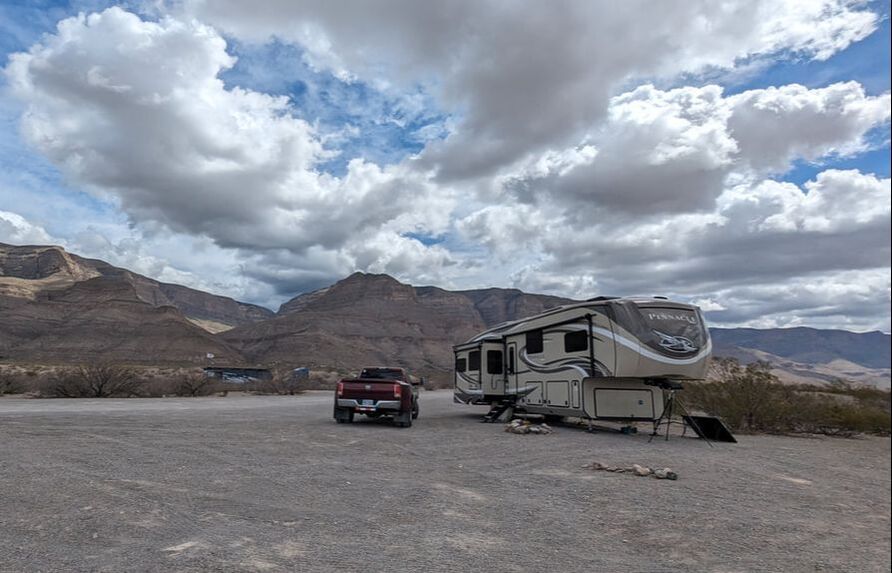
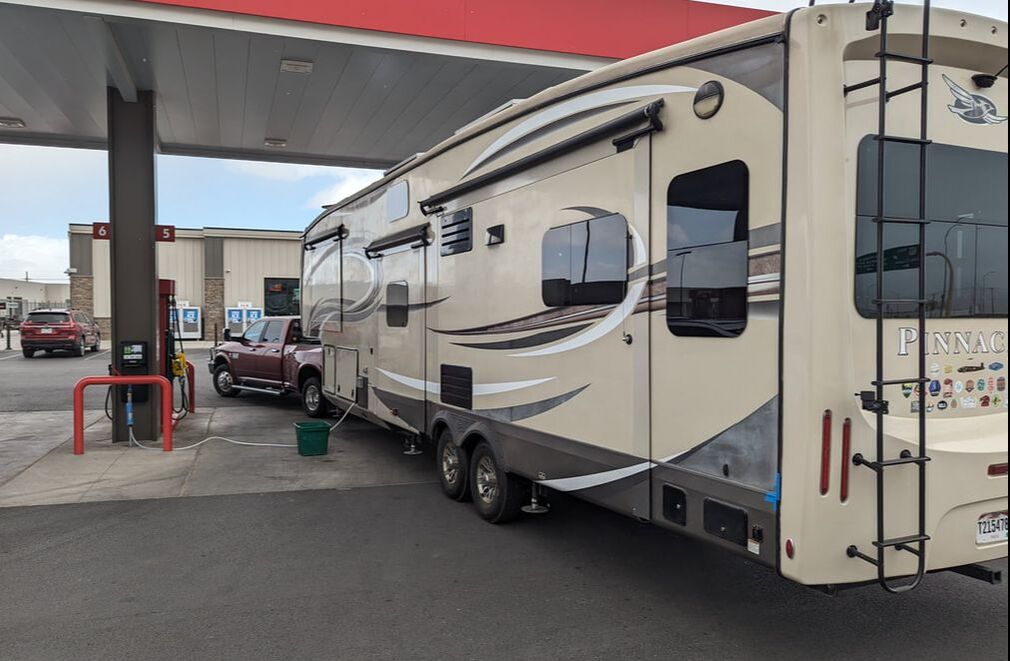
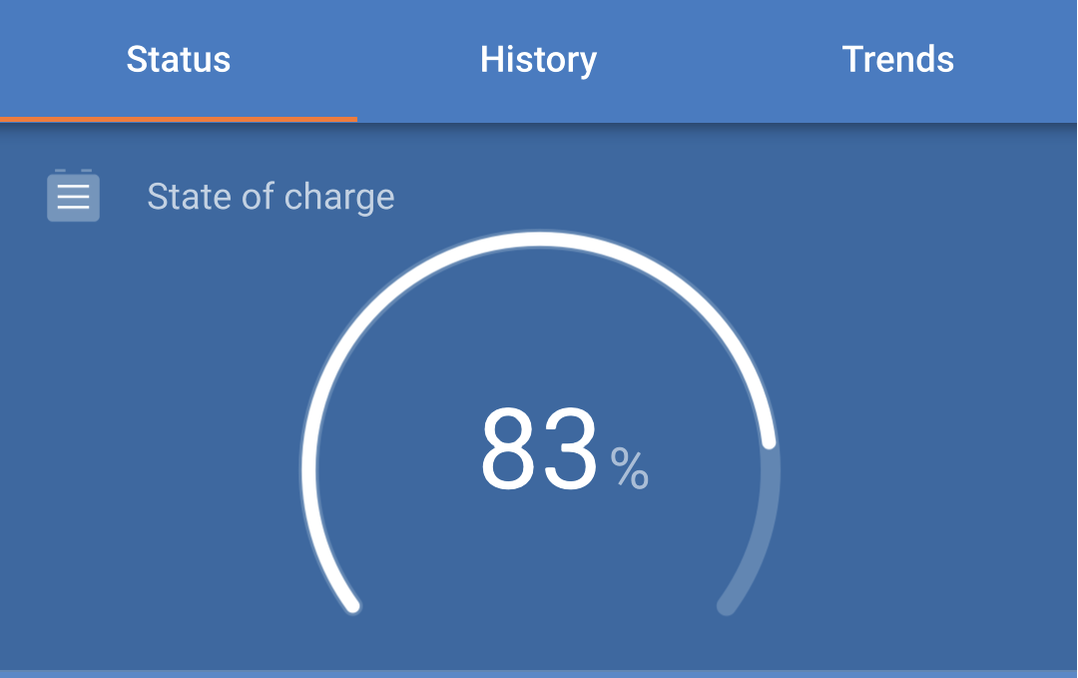
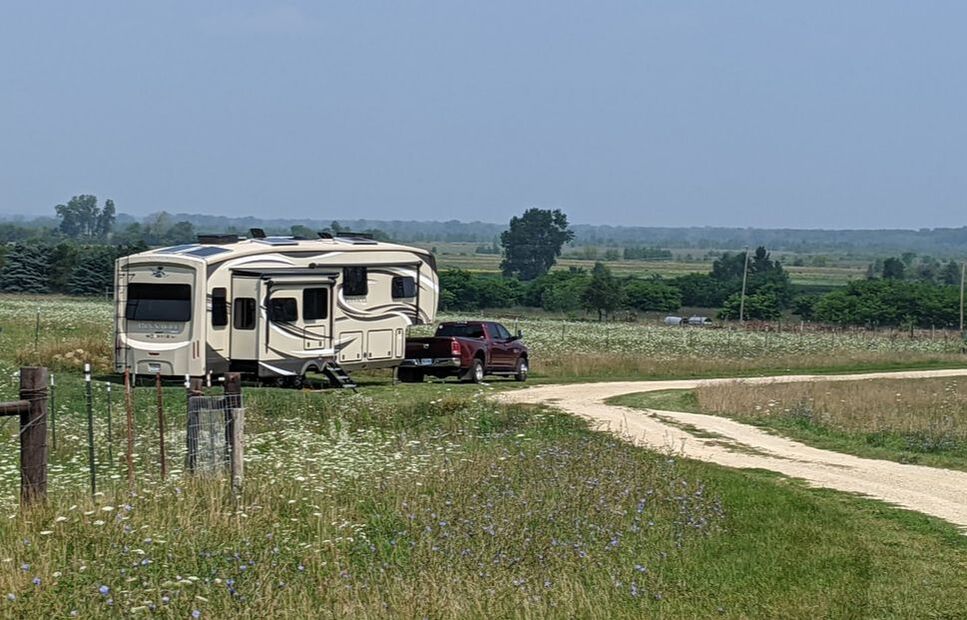
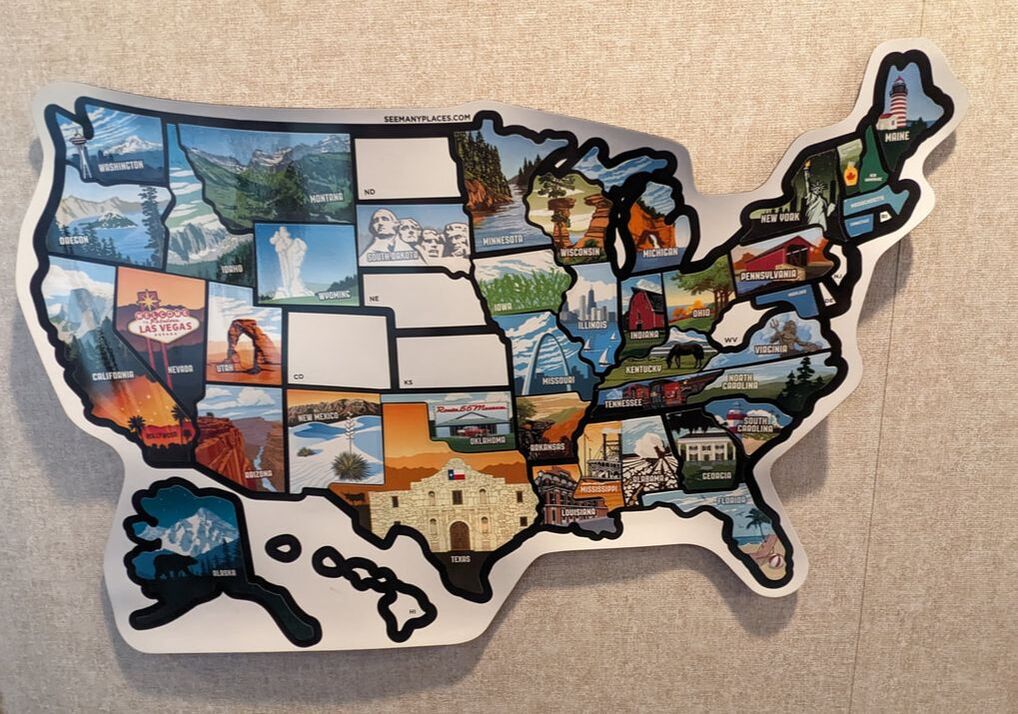
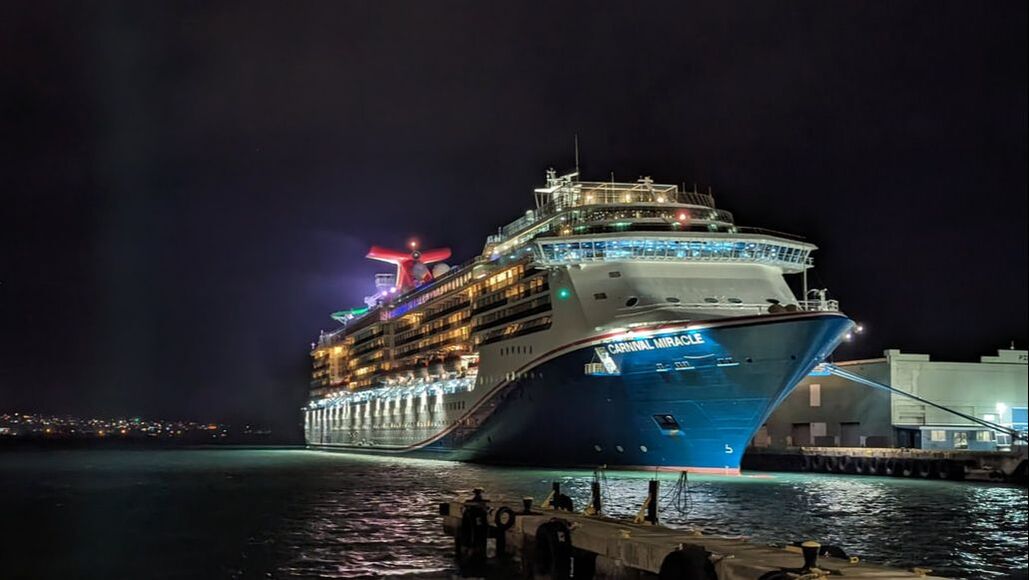
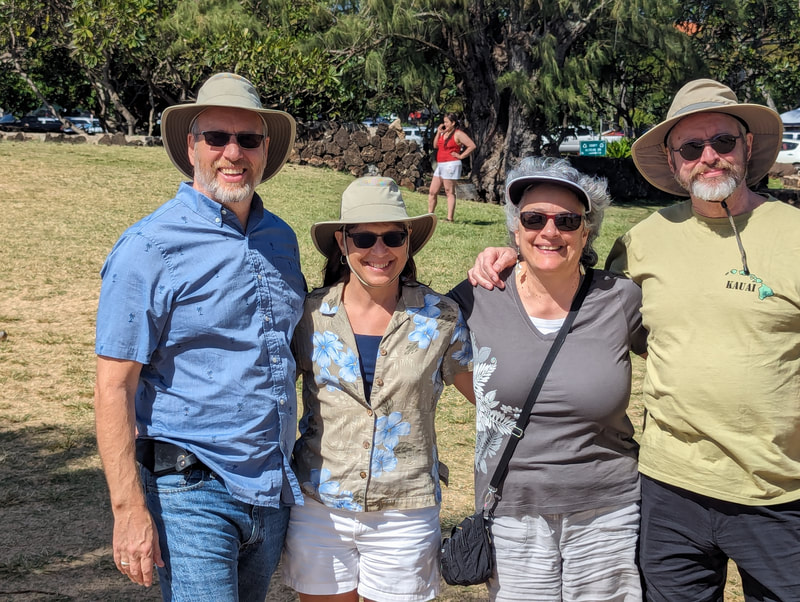
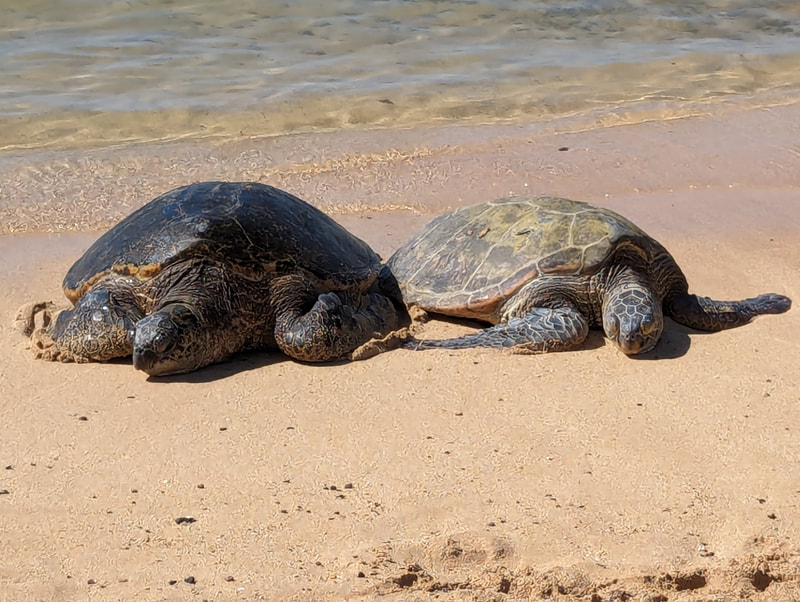
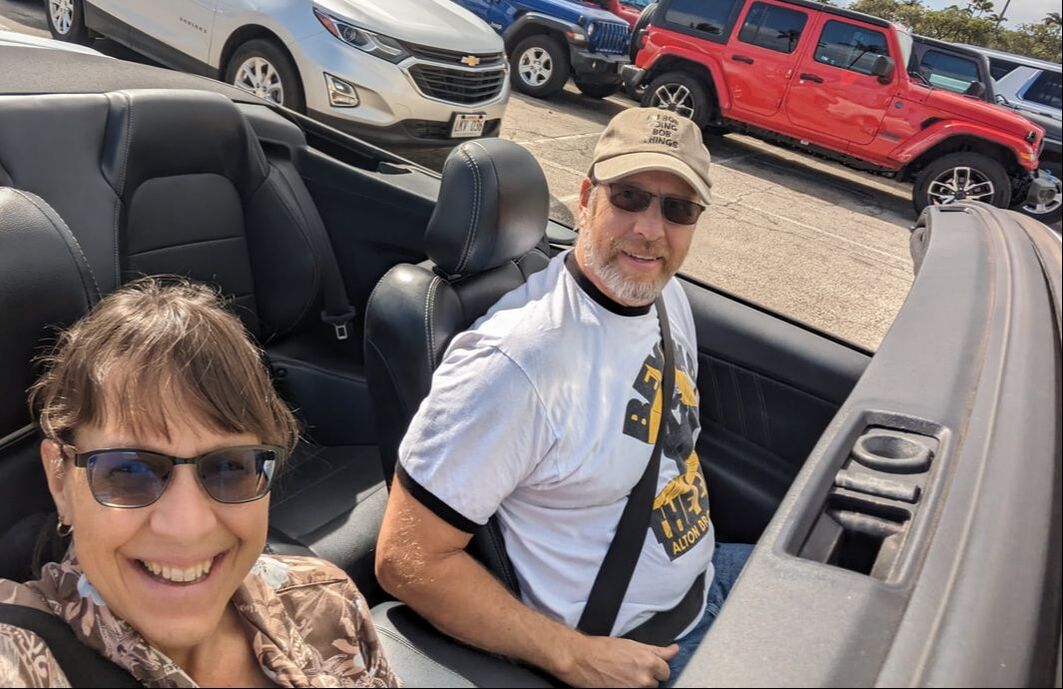
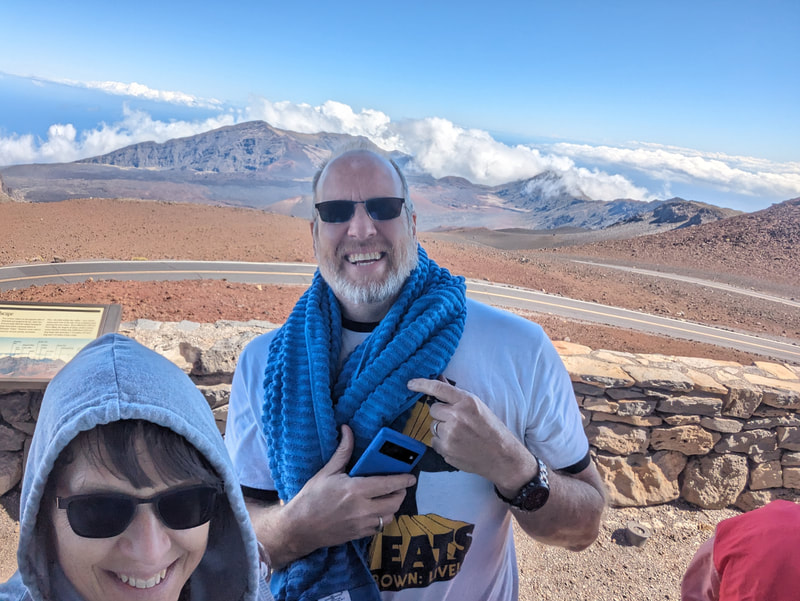
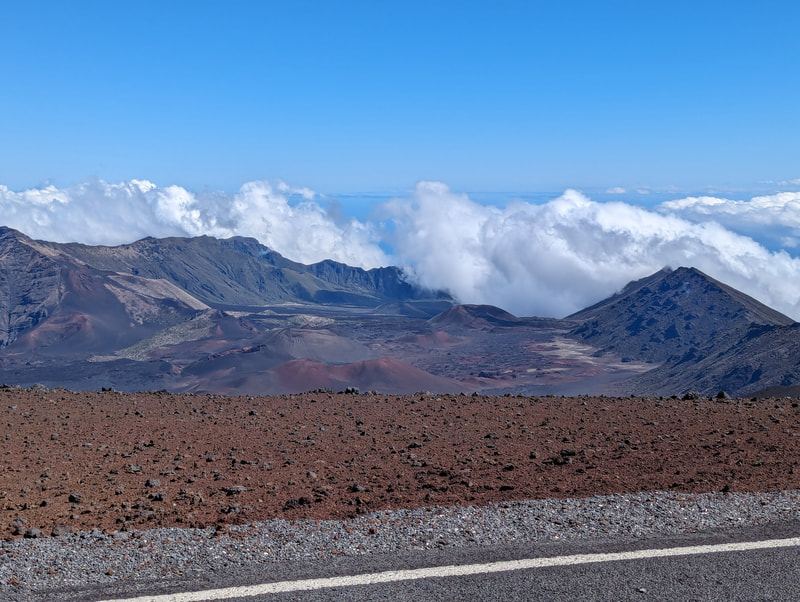
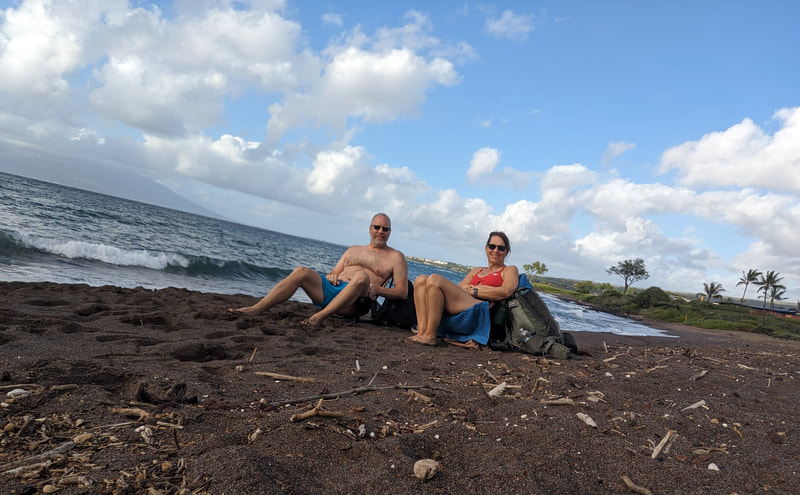
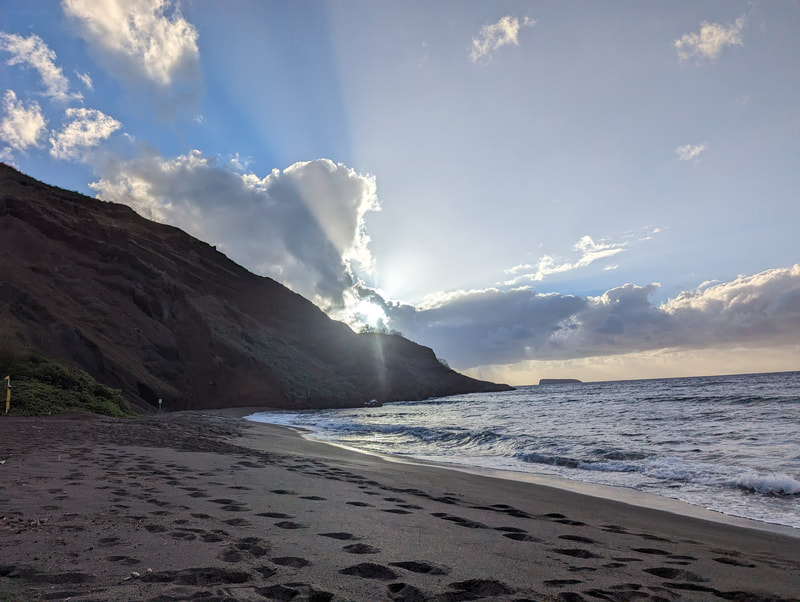
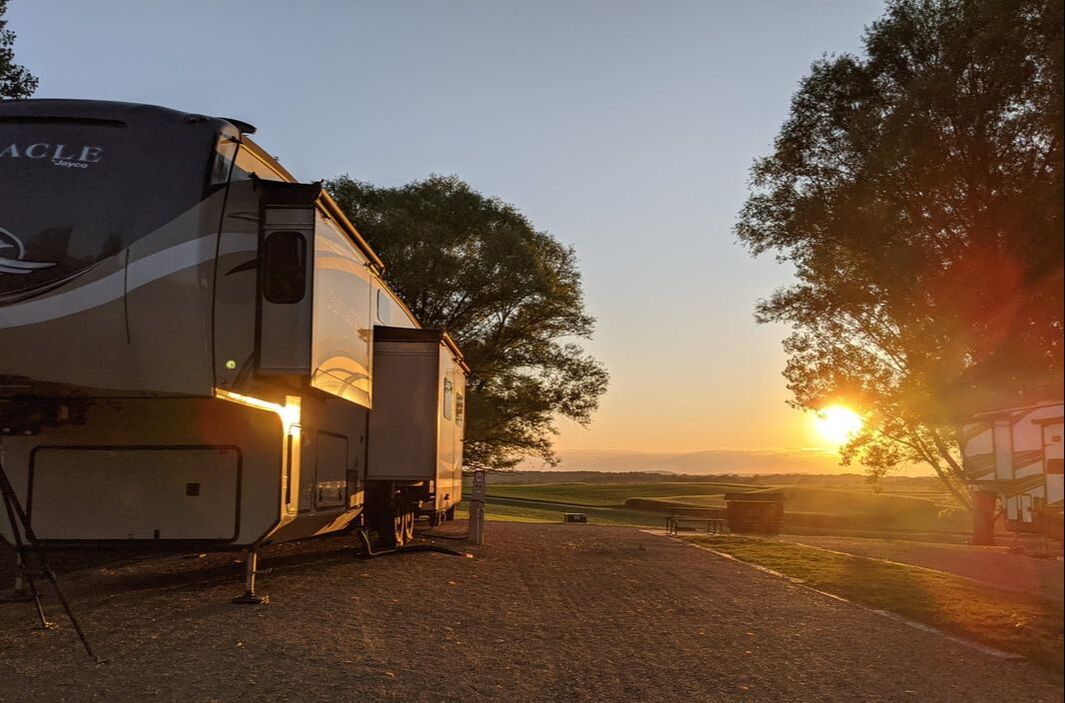
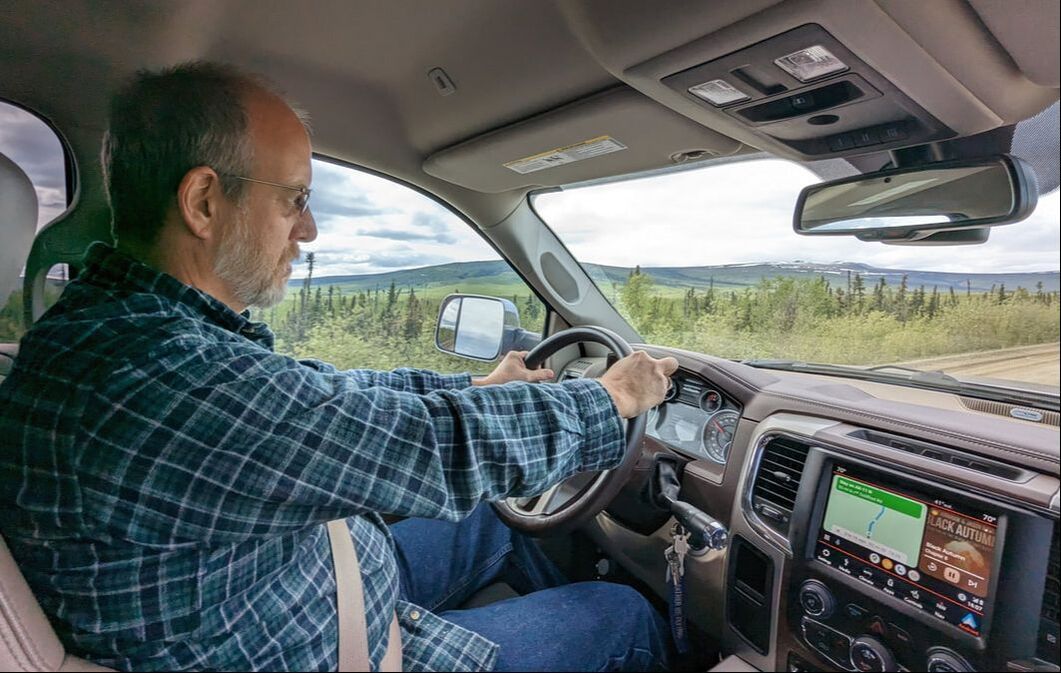
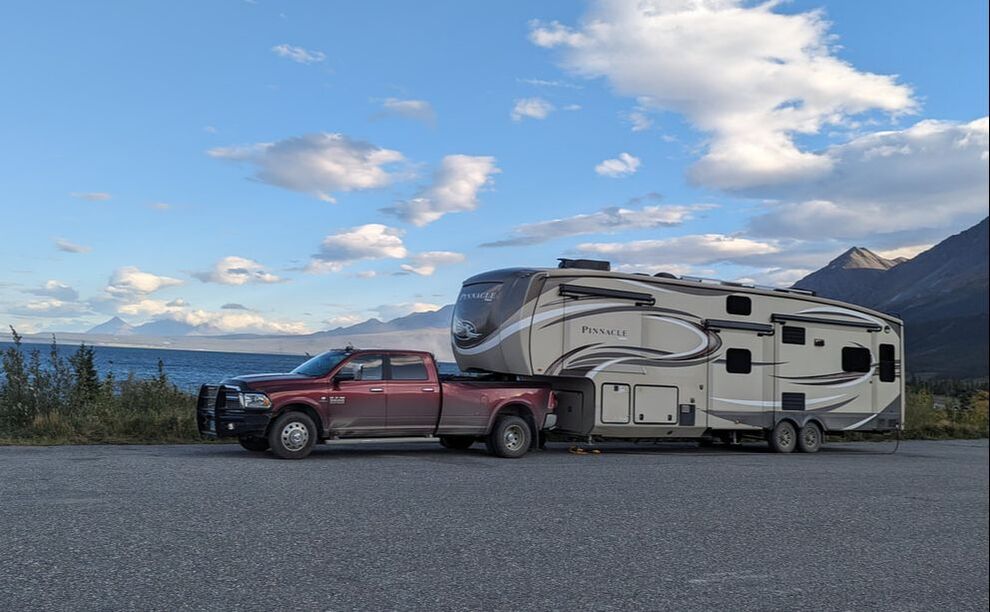
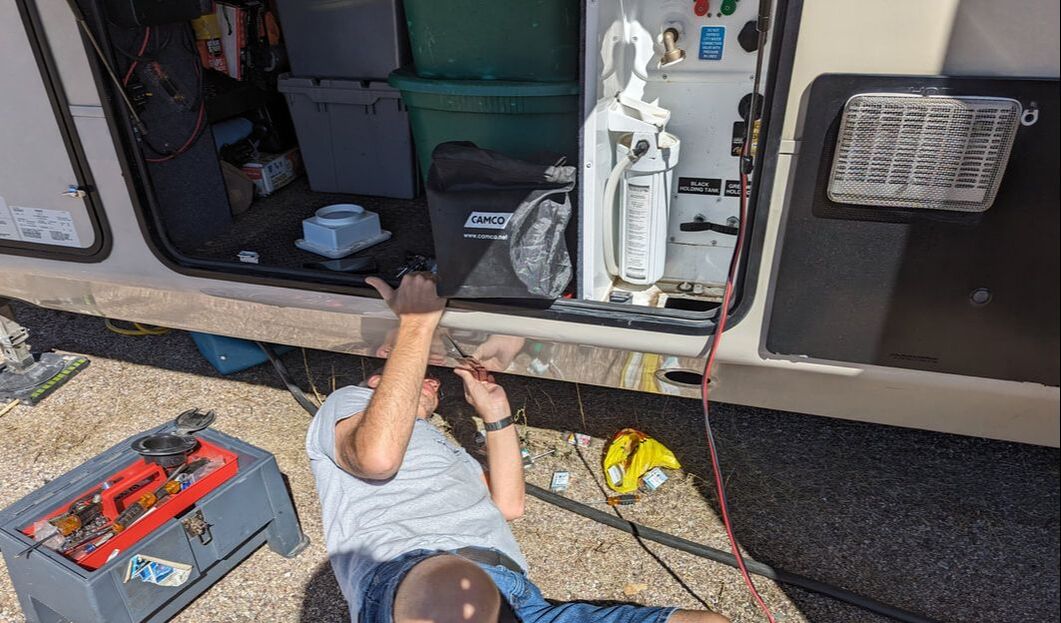
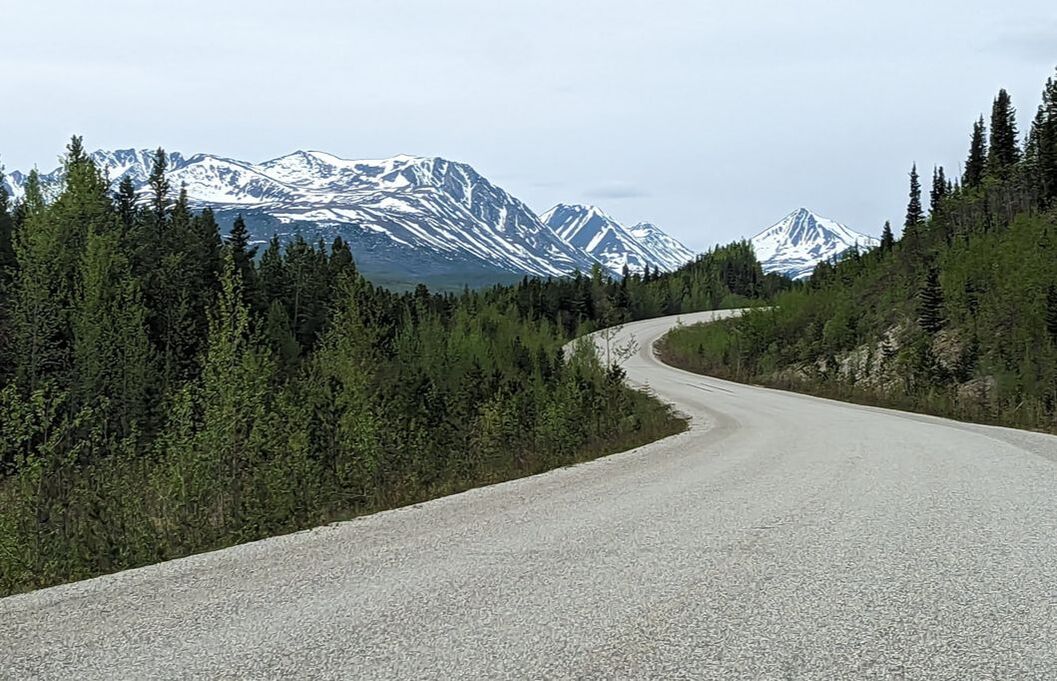
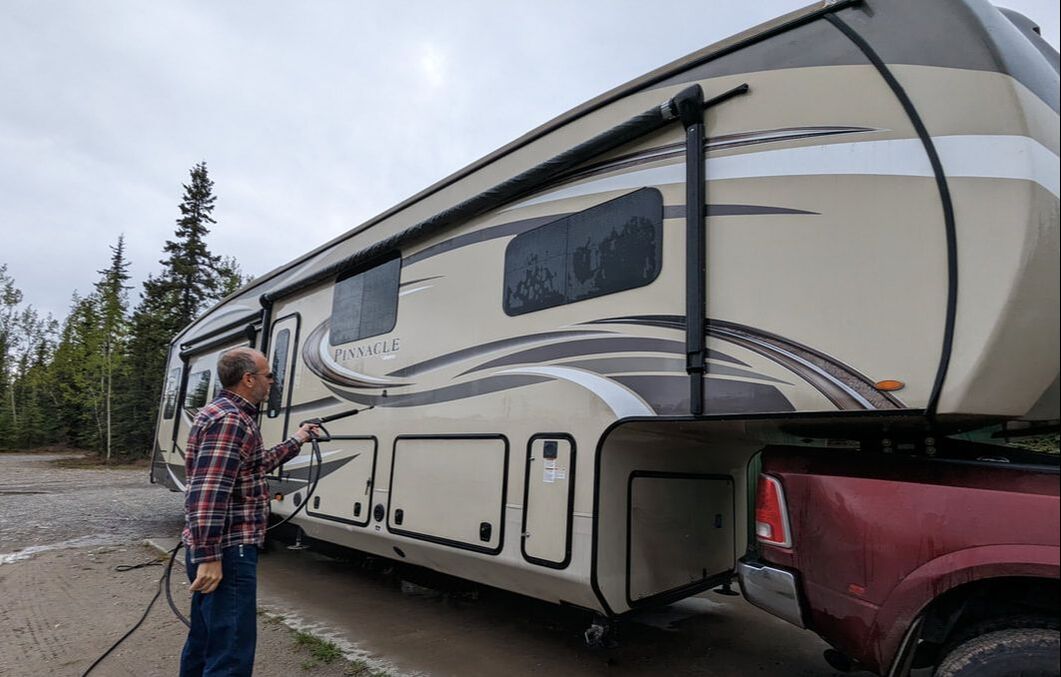
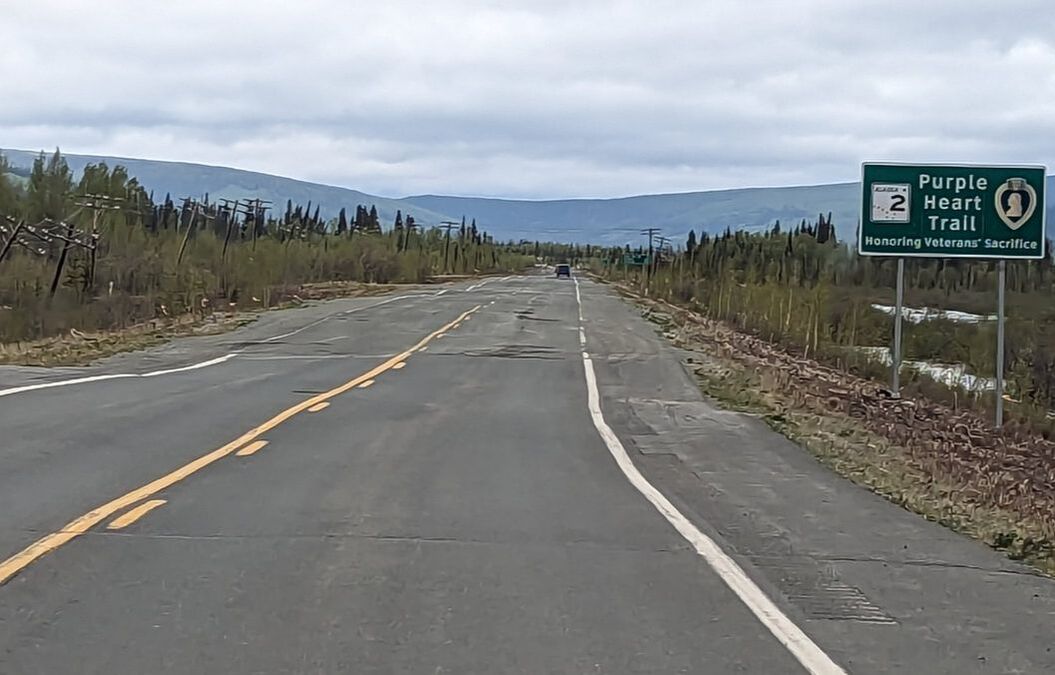
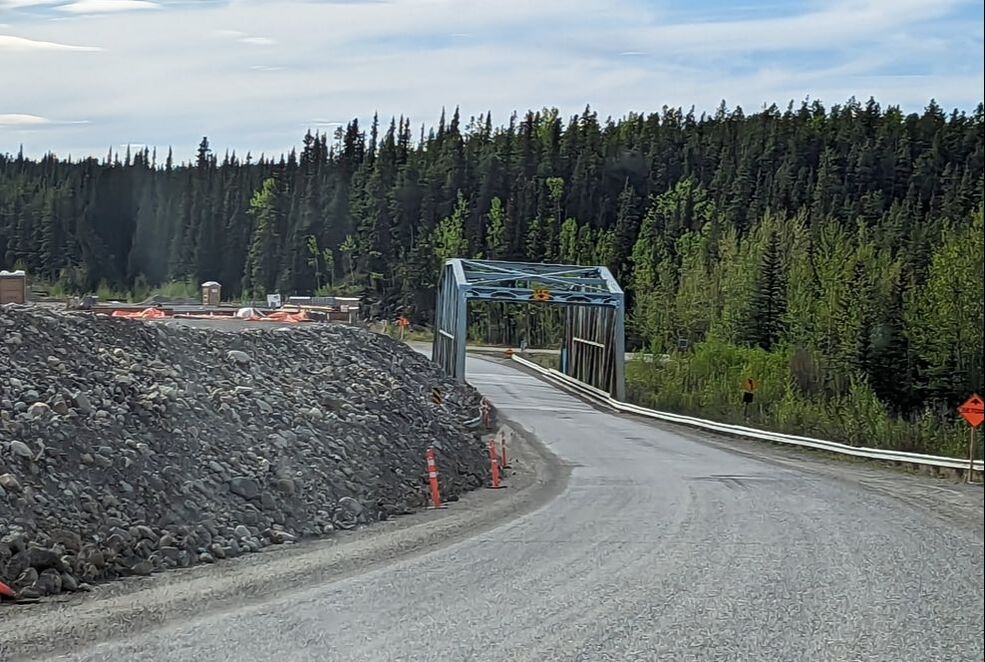
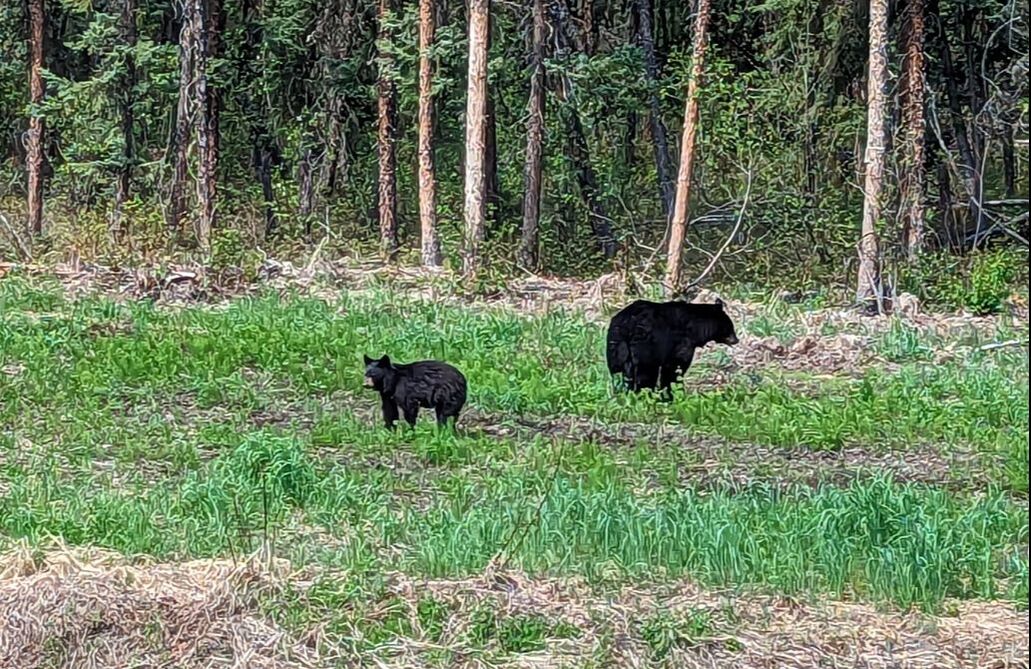
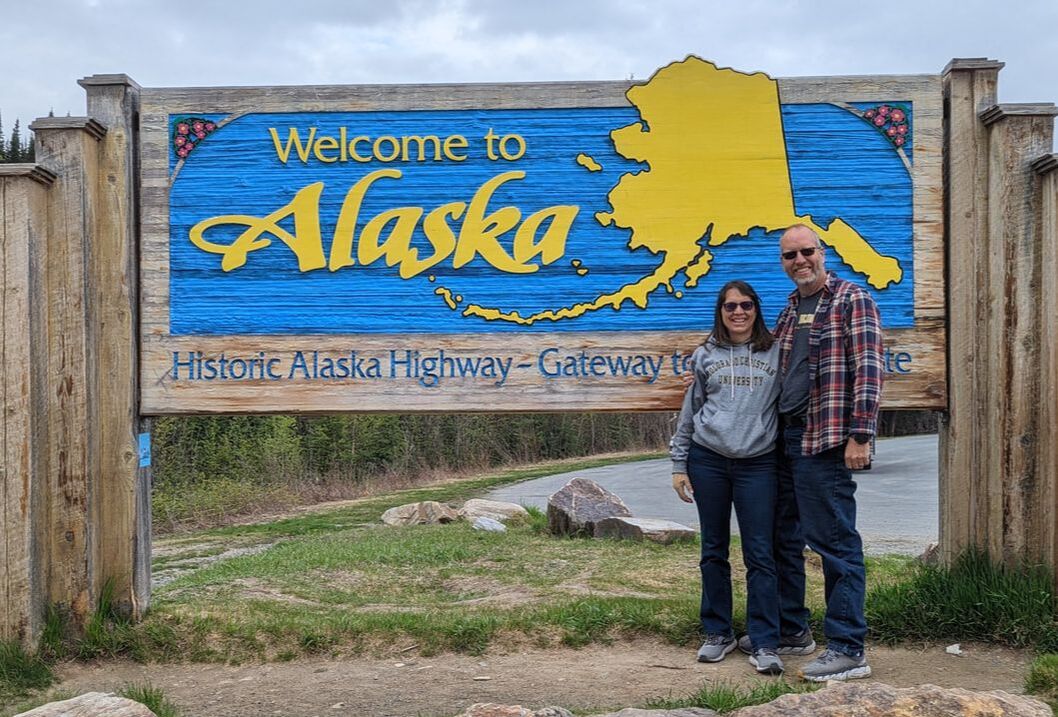
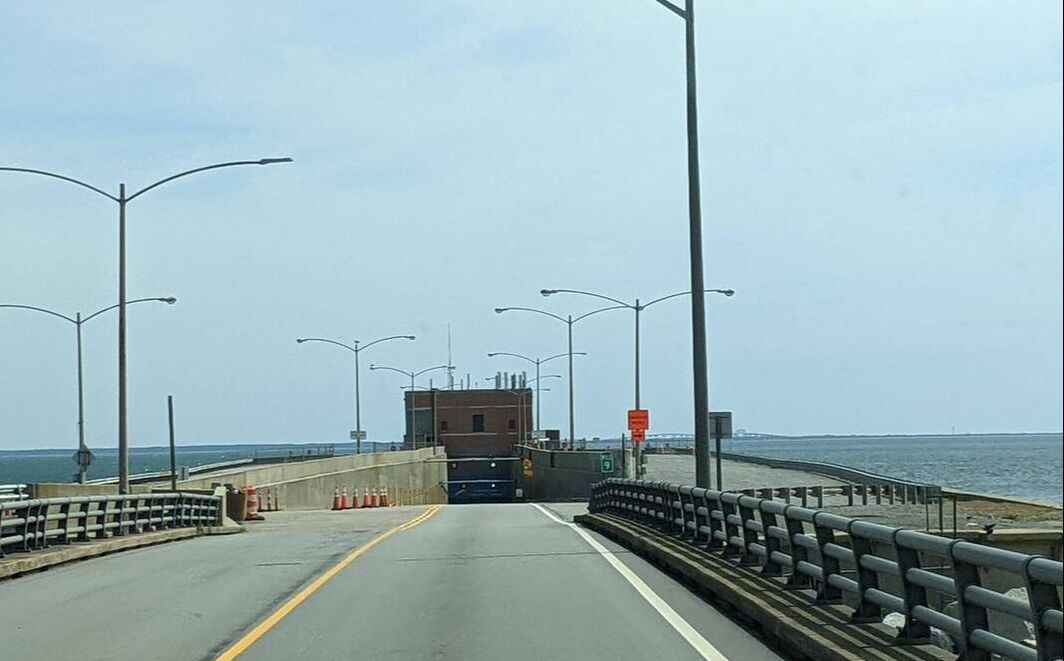
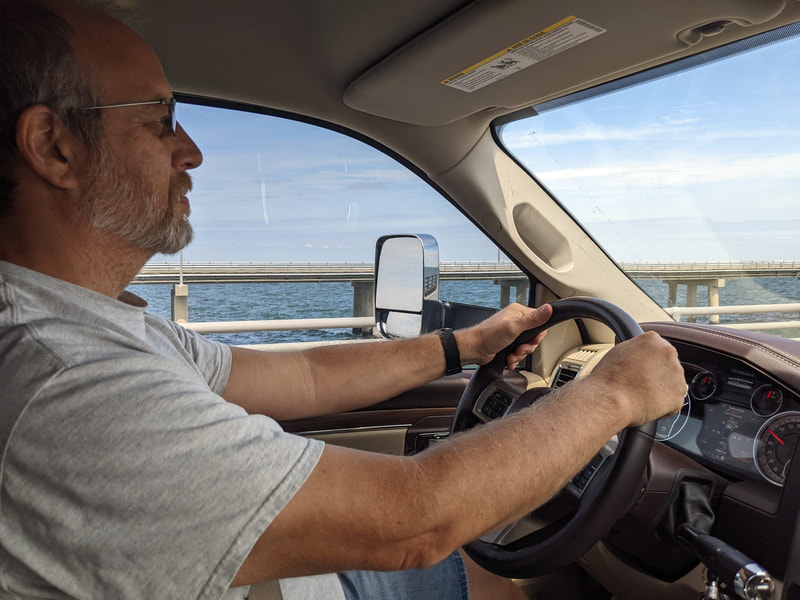
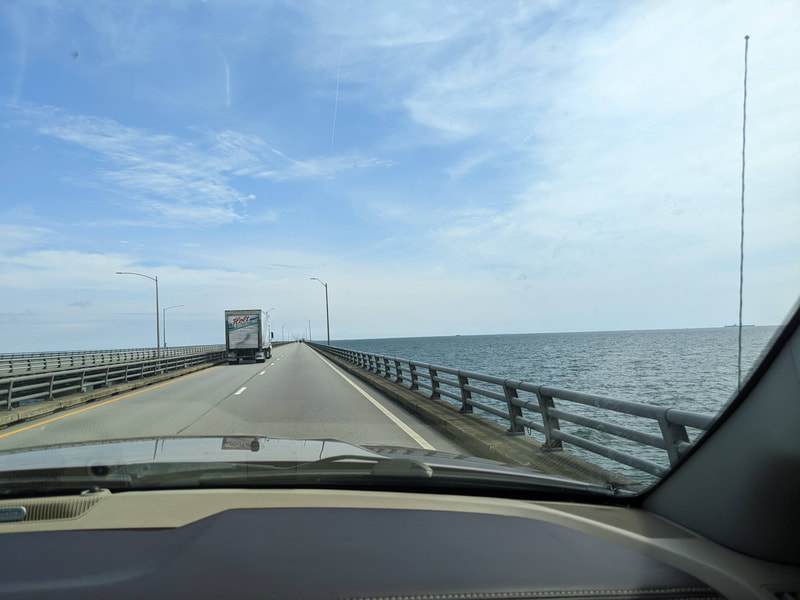
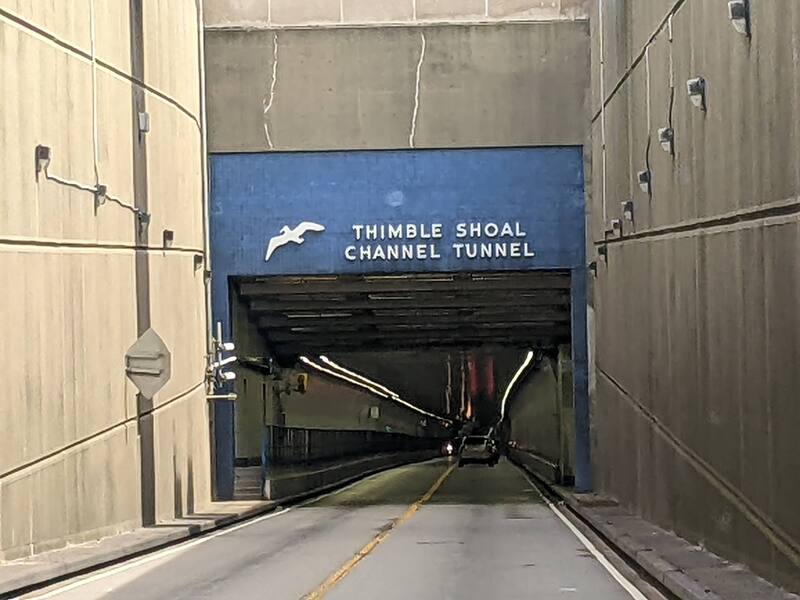
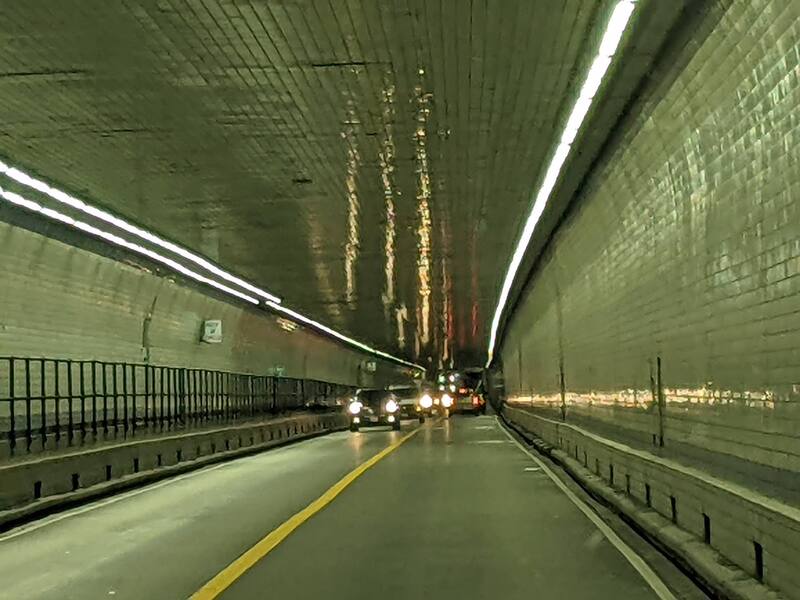
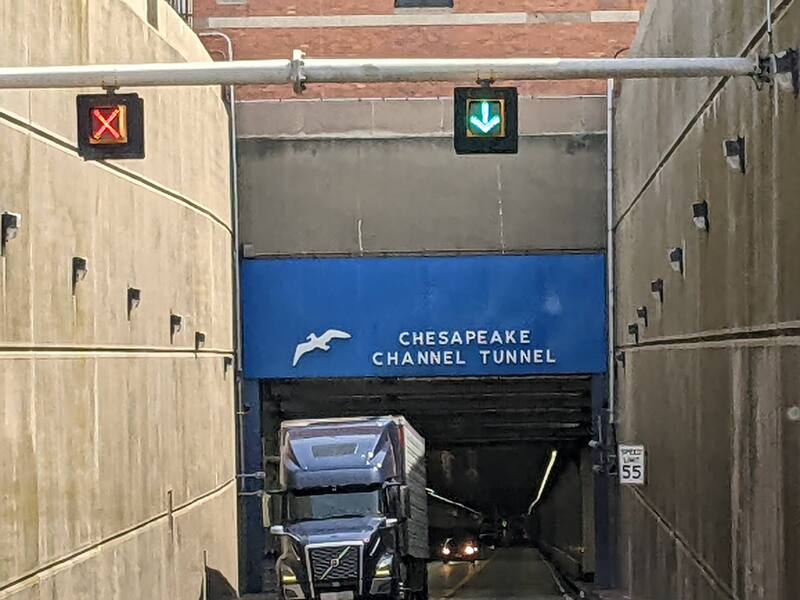
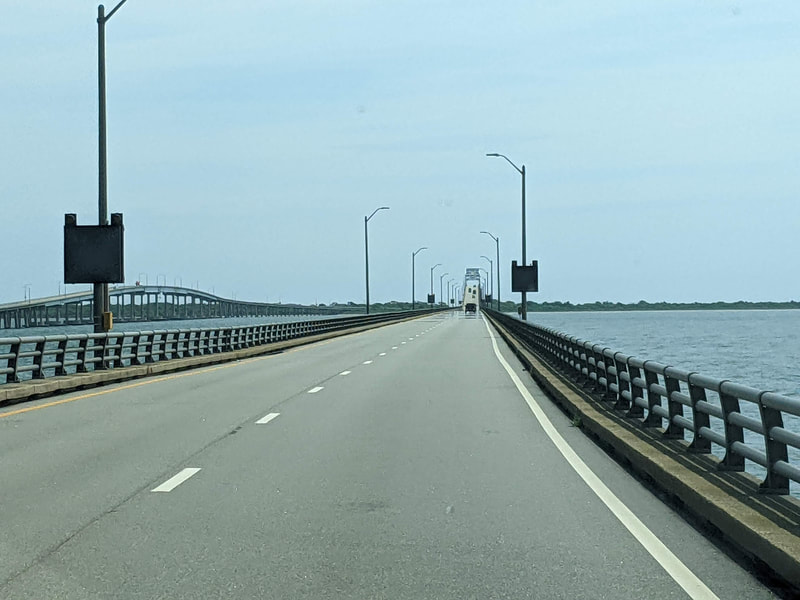
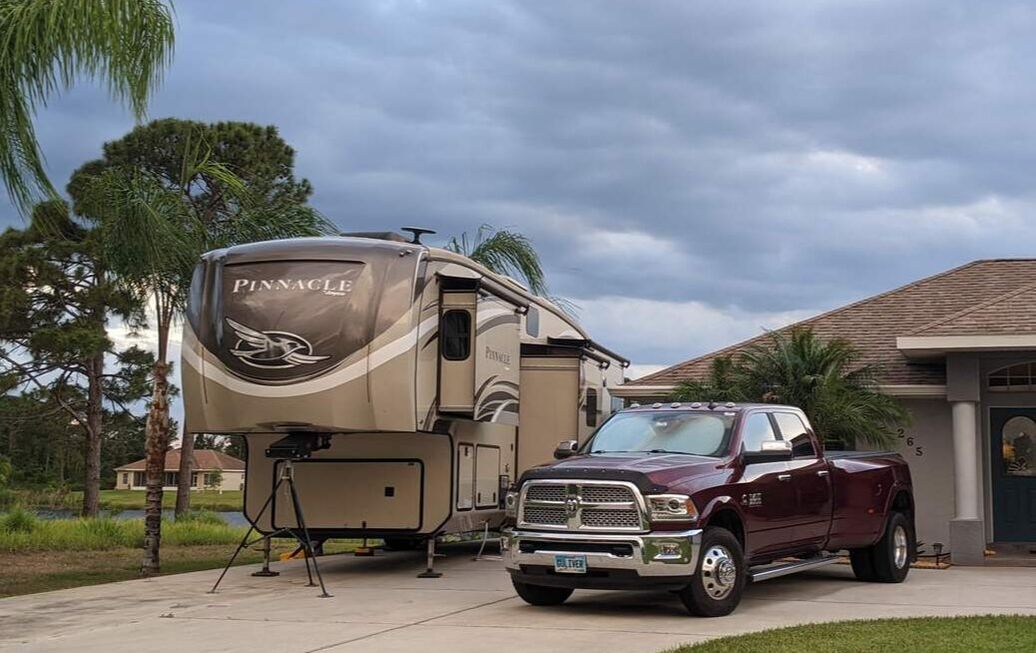
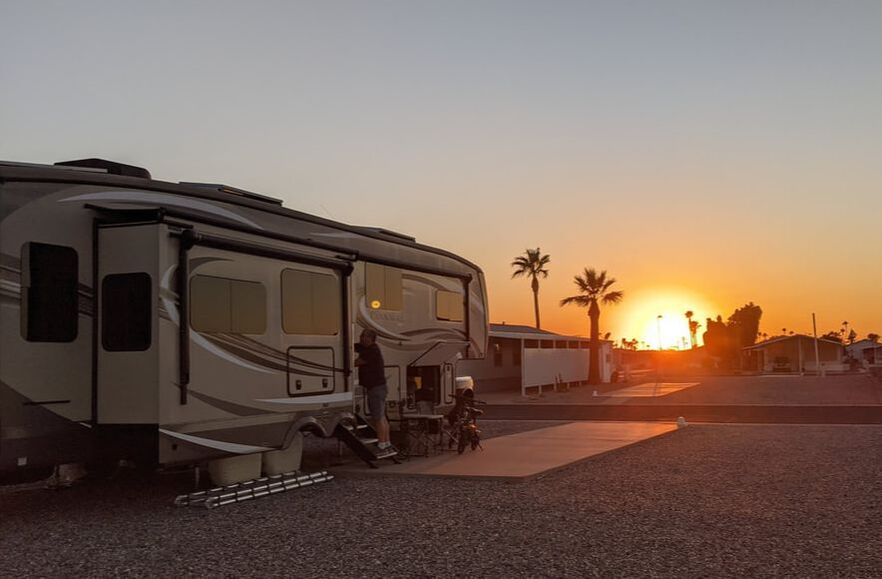
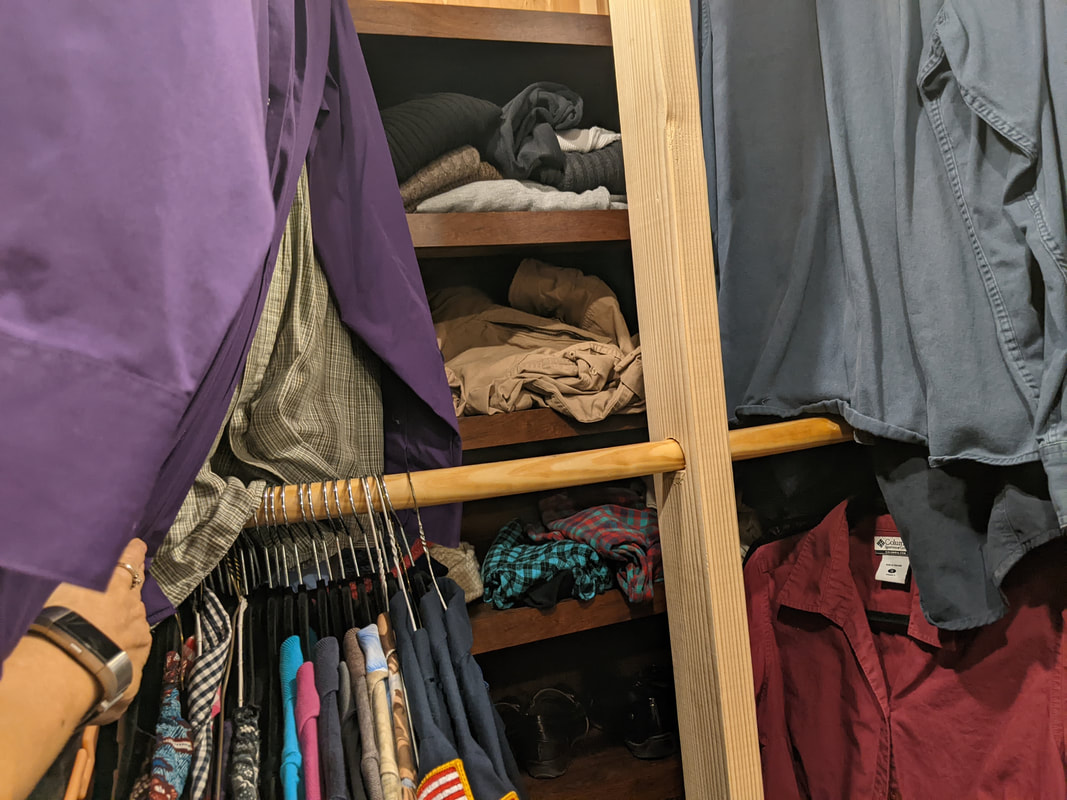
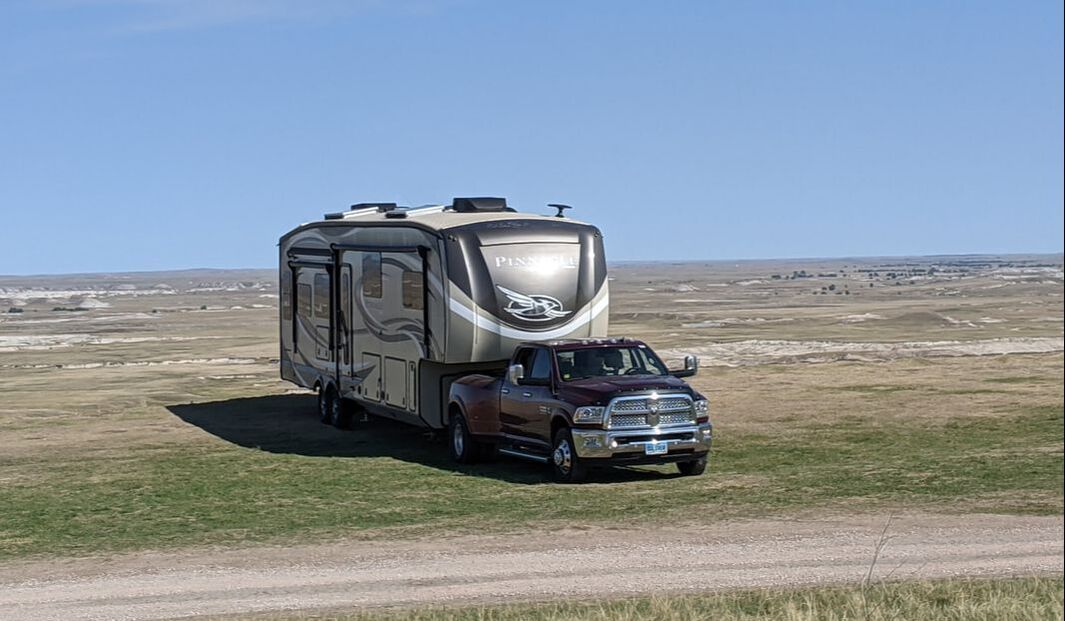
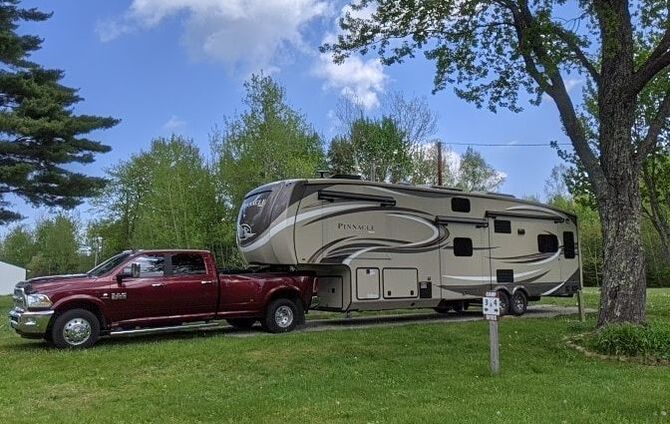
 RSS Feed
RSS Feed